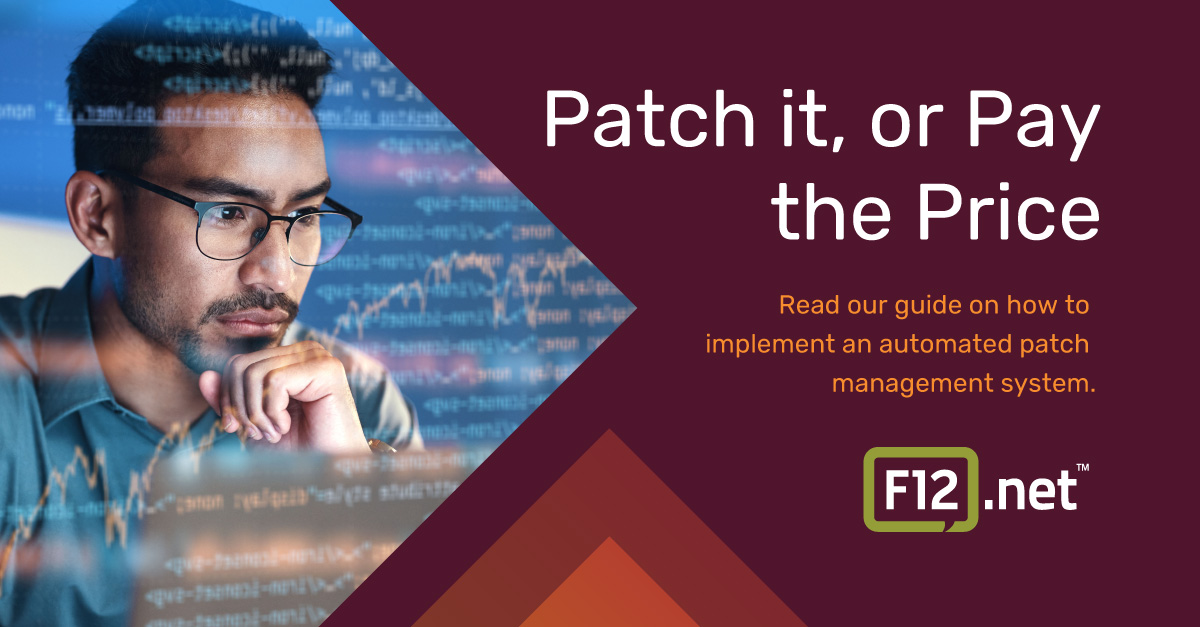Brief: Automated Patch management is often overlooked, yet it’s a critical defence against cyber attacks that exploit software vulnerabilities. Failing to patch can lead to severe financial and reputational damage, as seen in the Marriott data breach. This guide will show you how to implement an automated patch management system to secure your business, save resources, and stay compliant with regulatory requirements.
You either die a hero, or you live long enough to see yourself become the villain.”
— Harvey Dent, The Dark Knight
In the context of patch management, neglecting updates can turn your IT systems from heroes into villains—unpatched vulnerabilities can bring down even the strongest defences.
Don’t let outdated software be the weak link.
We’ve all been guilty of clicking “Remind me later” when prompted to update software. It’s a small action, a minor delay—but in the world of cyber security, that single click could open the door to a major disaster. Unpatched software is one of the most common entry points for cyber criminals, and the consequences of ignoring updates can be catastrophic.
Businesses that delay or neglect patching leave themselves exposed to vulnerabilities that could lead to costly data breaches, reputational damage, or even operational shutdowns.
The solution? An automated patch management system that takes care of these critical updates without relying on human intervention.
This guide will walk you through what automated patch management is, why it matters, and how to implement it to keep your business secure.
What is Patch Management?
Patch management is the process of applying updates, often called “patches,” to software applications and systems. These updates are designed to fix known vulnerabilities, improve functionality, and ensure overall security. Patches are released by software vendors regularly to combat newly discovered threats, and they need to be applied promptly to protect against potential exploitation.
Automated patch management takes this process further by using technology to apply these updates systematically without the need for manual action by IT teams. It helps ensure all systems stay up to date, even if individual users or administrators forget.
Why Automated Patch Management is Crucial for Your Business
1. Protects Against Known Vulnerabilities
Cyber attackers are on the lookout for unpatched software to exploit. Automated patch management ensures that these vulnerabilities are closed before they become a problem. Many cyber attacks succeed because they target systems with known, unpatched weaknesses.
2. Minimises Human Error
Manual patching relies on people—and people can be busy, forgetful, or unaware of the importance of a particular update. Automating the process eliminates the risk of human error, ensuring every critical patch is applied promptly.
3. Saves Time and Resources
Manually keeping up with updates is time-consuming and inefficient, especially for larger organisations with numerous devices and software applications. Automation helps free up your IT team to focus on strategic initiatives rather than spending valuable hours on routine updates.
4. Improves Compliance
Many industries have regulatory requirements that mandate keeping software up to date. Automated patch management ensures compliance by keeping detailed logs and providing a record of when updates were applied—essential for audits and regulatory checks.
Steps to Implement an Automated Patch Management System
1. Assess Your Environment
Begin by understanding what systems, devices, and applications need to be patched. This inventory process will help you understand the scope of your environment and identify what requires monitoring. Include both software and hardware that could have security vulnerabilities.
2. Choose the Right Patch Management Tool
There are several automated patch management tools available that can streamline the process. Choose one that fits the needs of your organisation, considering factors like:
- Compatibility with your existing systems.
- Scheduling flexibility.
- Reporting capabilities for compliance purposes.
Popular tools include Microsoft WSUS, Automox, and SolarWinds Patch Manager. The tool should be able to centrally manage patches across all devices in your network.
3. Set Up Automated Policies
Configure policies that determine when and how patches are applied. Some key considerations include:
- Patch Testing: Test patches in a controlled environment to ensure they don’t interfere with system stability.
- Scheduling: Set up automated patching during off-peak hours to minimise disruptions to productivity.
- Criticality Levels: Automate the prioritisation of critical patches, ensuring security vulnerabilities are addressed immediately while non-critical updates may be scheduled at a later time.
4. Monitor and Review Regularly
Automated doesn’t mean “set and forget.” It’s vital to monitor patching activities regularly. Review logs, generate reports, and make sure there are no failed updates that require manual intervention. Automation should ease the workload, but consistent oversight ensures nothing slips through the cracks.
5. Communicate with Your Team
Keeping your organisation informed about patch management policies is crucial. Educate employees about the importance of applying updates and explain how the automated system will work in the background. Effective communication can help prevent unnecessary worries about system restarts or downtimes during patching.
Best Practices for Effective Patch Management
- Stay Informed: Subscribe to security advisories from software vendors to stay informed about the latest patches.
- Have a Backup Plan: Always have a reliable backup plan before applying patches. If something goes wrong, you should be able to restore systems quickly.
- Segment Your Network: Segmenting your network can help isolate any potential issues that arise during patching. For example, patch non-critical systems first to evaluate stability before rolling out updates across the board.
Real-World Consequences of Failing to Patch: A Case Study on Marriott
When it comes to patch management, it’s easy to put off updates, especially when they feel like a minor inconvenience. But failing to address vulnerabilities can have massive consequences, as the Marriott data breach in 2018 clearly demonstrated.
The Marriott Data Breach: What Happened?
In 2018, Marriott International announced that it had experienced a data breach that exposed the personal information of approximately 500 million guests. The breach had actually been ongoing for several years before it was discovered. Attackers exploited unpatched systems within Marriott’s infrastructure, giving them prolonged access to the hotel chain’s databases.
The breach led to a significant loss of customer trust, substantial regulatory fines, and a major blow to Marriott’s reputation. It served as a stark reminder of the importance of not only securing systems but ensuring all known vulnerabilities are patched as soon as possible.
Key Takeaway:
The Marriott incident illustrates why patching isn’t optional. Cyber criminals are constantly searching for weaknesses, and unpatched software is often the easiest way in. Regular patching and an automated patch management system can significantly reduce the risk of such breaches by ensuring vulnerabilities are addressed before they become entry points for attackers.
Learn more about the Marriott data breach and its impact.
Common Challenges and How to Overcome Them
- Compatibility Issues: Sometimes, new patches may not be compatible with legacy software. To mitigate this, always test patches in a non-production environment first.
- Resource Management: Some organisations may find it challenging to allocate enough resources to set up an automated patch management system. In this case, consider partnering with a managed service provider like F12.net to take over this crucial process and ensure every vulnerability is promptly addressed.
- End User Disruption: Scheduling and communicating patch deployment effectively can reduce interruptions and minimise resistance from end users.
The Consequences of Failing to Patch
The cost of ignoring patches is steep. From ransomware attacks that lock down your data to breaches that expose sensitive information, the consequences can be devastating to your reputation and your bottom line. Don’t let “Remind me later” lead to regret later.
Patch management isn’t just about keeping software current—it’s a critical component of a secure and resilient IT strategy. By implementing an automated patch management system, you can minimise your exposure to threats, save valuable IT time, and ensure compliance with industry standards.
The time to act is now. Patch it, or pay the price.
Ready to Automate Your Patch Management?
F12.net can help you implement a comprehensive, automated patch management solution tailored to your needs.
Don’t leave your business exposed—contact us today for an automated patch management consultation.



